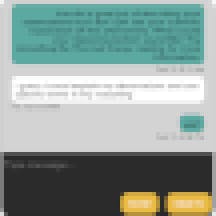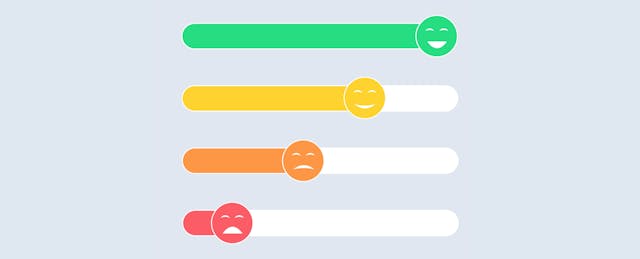This is the first part of a two-part story about changing classroom culture. Read part two to learn what change this teacher made to help students value growth over grades.
Over winter break in 2015, I found myself scouring the internet for career alternatives that would take me out of the classroom. I was in my fifth year of teaching at Forest Ridge, an independent all-girls school serving students in grades 5-12 in Bellevue, Wash., and I was feeling isolated in a room with students who didn’t seem to want to engage with my class, despite all my efforts to bring enthusiasm and passion to my work.
The learning environment was tense, my students were angsty and I didn't have the information or strategies to make it better. I wanted to go back to my previous life as a geologist, where everything was quantifiable and the path forward was always revealed through methodical data analysis. Little did I know that by 2019 I would find a way to apply the data science strategies I learned as a geologist to bring joy and engagement back to my classroom.
This Class is Unfair
The pivotal class I was teaching at the time was a physical science course, consisting of three sections of 15 to 17 eighth graders. The previous summer, I started the Physics By Inquiry Summer Institute at the University of Washington, a three-year program where teachers learn how to run an inquiry-based classroom by engaging in inquiry-based learning themselves. I came away from the institute eager to try inquiry-based instruction in my class during the 2015-16 school year.
The switch to inquiry-based learning required a dramatic shift from teacher- to learner-driven instruction. To maximize instructional time, I also transitioned to a flipped-classroom model for content delivery, providing my students with learning materials to engage with online outside of school before coming to class. I was hopped up on the energy that comes from a new, promising instructional strategy and, admittedly, a small dose of ego since I’d discovered something I was sure would be a game-changer. I was convinced this would spark excitement for my students.
Unfortunately, reality had other plans. By winter, my students ranged from patiently tolerant to disengaged to downright defiant, and parents and administrators were starting to get involved. In response to my new teaching style, I was seeing clear signs of student resistance: refusal to engage with learning tasks, blaming poor academic performance on my teaching and disrupting class. Some students were rallying others to join in these behaviors.
After a long talk with my mentor teacher, I decided to stick with teaching at least through the end of the year, but it was getting harder each day. Hoping to get to the root of the issue, I conducted an anonymous survey of my students. I asked a variety of questions about their perception of the instruction and assessment practices we had shifted to, the types of feedback they received and how they felt about the class. Combing through the results was a humbling and difficult experience. In order to leverage the survey results to change my practice, I knew I needed to remain objective, so I applied statistical analysis techniques and qualitative categorization, which surfaced two general trends:
- Unfair Assessment: "It felt unfair when there were questions on the quiz which were not taught in class or even the videos and textbook, because often times I prepared well for the tests but never got the grade I thought I deserved." —Anonymous student
- Lack of Agency over Learning: "I felt that you didn't teach us anything in class...with so many students telling you we learn better with lectures, I feel you are ignoring our feedback and just taking the easier path." —Anonymous student
This was the toughest feedback I have ever received, but it helped me define the problem so I could figure out what to do about it. Through the anger and frustration of their feedback, I could see what my students were really trying to tell me: they felt a distance and lack of support in my classroom, and it was unfair.
I dug into the existing research about student engagement and realized that my challenge was actually that my students lacked agency over their learning. In switching to inquiry-based instruction, I had pulled myself back and asked my students to step up and take the lead, but I hadn’t given them the skills or strategies to do it successfully. So my first step toward empowering them to drive their learning was to include them in the process of figuring out how to rebuild the positive classroom culture we had lost.
Over the past three years, with experimentation and many conversations, my students and I have worked together to develop a system of learning that values transparency, fairness, collaboration and feedback—and we've got the data to support that it’s improving student engagement.
Building an Effective Feedback System
My quest to resolve issues around student engagement and agency led me to partner with two other educators who were struggling with related problems. After reading “The Power of Feedback,” a research report by John Hattie and Helen Timperley, we concluded that frequent and focused feedback was the key to empowering students to take charge of their learning.
We decided to make some changes, but shifting our practices proved harder than we expected. With anywhere from 50-150 pieces of work to grade at a time, narrative feedback was taking days for each assignment, and half the students were tossing their feedback in the recycling bin without reading it. To ease the burden, we tried peer feedback but found that students were anxious about being honest and unclear on what feedback would be helpful, so they spent their time hunting for misspelled words instead of digging deeper. Part of the issue was that students didn’t know how to give high-quality feedback or what to do when they received it.

In response, we created Floop, a tool that allows teachers to give digital annotated feedback, allows students to respond immediately to the feedback and facilitates a scaffolded and anonymous peer review session. Floop became the foundation for a system that aims to teach feedback literacy skills, make actionable feedback constantly available, and give students the agency to act on their feedback. Here’s how it works for a typical unit:
- Engage with the Learning Criteria: We start each unit by mind-mapping the learning targets and posing questions about the unit topic.
- Check-In & Reflect Regularly: After each inquiry lab, we complete a Socratic-style group checkout, in which students pose and respond to questions about the skills and concepts we covered, then reflect in digital feedback portfolios—a place where students keep a record of their feedback, action plans and reflections so they have a record of their journey and not just their destination.
- Translate the Rubric: Before any assessment, we work as a class to translate the related rubric into student-friendly terms and evaluate examples of student work.
- Give & Get Feedback: After a first draft of any assignment, we complete a scaffolded peer-review session, in which students use Floop to provide feedback and engage in dialogue. Students use peer feedback to quickly revise their work and pose at least one question before I provide in-app feedback. The next day in class, they respond in-app to any questions they received from me or from a peer.
- Revise-Reflect-Revise: Students submit their final work and receive detailed narrative feedback, which I provide using another home-grown tool, Flexible Feedback. They self-assess and give themselves a grade, which goes in the gradebook as long as it’s reasonable. If it’s unreasonable, we have a quick conference to sort it out. Students always have the option to resubmit work in response to feedback, and their improved competency is reflected in their summative grade.
Enter, Data Science
The thing about feedback is that it’s not enough to simply give and receive it—you’ve got to analyze it. That’s when data science come into the picture. Students carefully comb through their peer and teacher feedback, color-code and categorize it, look for patterns and make an action plan for how to implement it.

At the end of each unit, students repeat this data-driven reflection to identify their strengths and opportunities to grow. They summarize their achievements and identify the behaviors and strategies that contributed to their success. For example, one of current students, Julia, recently wrote:
"In some of my earlier projects and explanations…my sentences were excessively long and I was including unnecessary and repetitive phrases and sentences. Throughout my explanations and arguments, I have learned how to make my writing more concise and how to organize my thoughts…My feedback from Ms. Witcher helped me because it clarified what I did and didn’t [do] to bring my work to the next level."
At the end of each semester, grade reports come out and I find myself frustrated with that single number that’s supposed to represent the sum total of all learning in my class for each student. It doesn’t give any detail or direction to inform growth, so I supplement that reductive number with a growth summary report, which details performance on each skill and standard, self-assessment scores and progress on content targets, without averaging or summarizing their performance into a single score. Then I ask my students to make meaning of it.
This new feedback system has empowered my students to own their learning and helped me love teaching again. Instead of hearing talk of unfairness and seeing looks of disengagement, my room is now noisy with productive scientific arguments and objective conversations about mistakes and successes. Sure, my students still talk about their grades but their conversations are richer. They've learned how to talk about their progress and use data to talk about their actions and pathways forward.
This is the first part of a two-part story about changing classroom culture. Read part two to learn what change this teacher made to help students value growth over grades.


